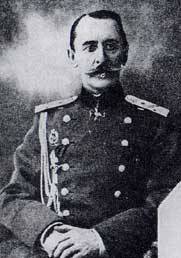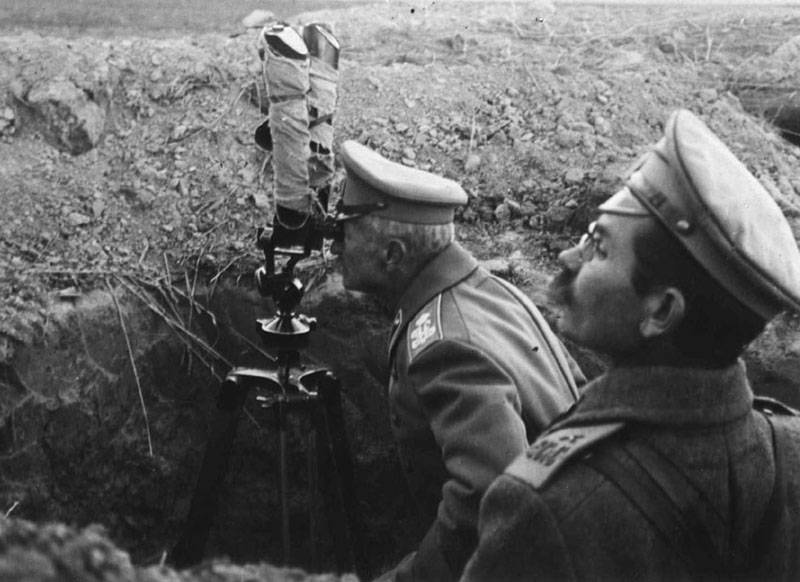Hide and show
Without touching on the psychological side of this issue, we can state (on the basis of militaryhistorical facts) that in most cases skillfully conducted demonstrations achieved their goal, misleading even cold-blooded and self-possessed military leaders. If tactical demonstrations gave a false idea of forthcoming actions on the battlefield, then strategic demonstrations had to mislead the enemy about future operations throughout the theater of operations, on one front, or at least in the sector of one army. Measures to ensure secrecy and demonstration during the organization of the 7th Army in Odessa in October 1915 and before the Brusilov breakthrough in 1916 were exemplary and achieved their goals.
7-I army in Odessa.
In October, the 1915, the 5, the Caucasian Army, the 16, and the 2, the army corps, as well as the 3, the Turkestan Rifle Brigade, were transferred from the front to the Odessa Military District — they had to be staffed with personnel and horse personnel, to receive the missing quartermaster , artillery and engineering property, and then join the special assault squad. The latter had, after landing in Varna or Balchik, act against the Bulgarians.
Before the arrival of the Emperor to Odessa on November 7, this plan was changed, and the above units were merged into the 7 Army - she was to go to the South-Western Front to participate in the operation on the river. Strype.
Stealth measures.
Of course, such a large operation as a landing on the shores of the Black Sea could not be hidden from both the enemy and the troops participating in it. All the efforts of the command were aimed at ensuring that his real intentions became known as late as possible - and the enemy did not have enough time to carry out the counteraction. These measures were as follows.
1. Detailed routes with the designation of the landing points of troops deployed in the Odessa district, the parts were not issued; The conductors and station commanders had information about the transportation from the departure stations to the nearest junction stations, for example: Minsk - Orsha, Orsha - Smolensk, etc .; landing point became known only in Kiev.
2. Information indicating the concentration goals was communicated only to the commanders of the formations - and only after disembarking from the railway transport. At a meeting with General of the Infantry D. G. Shcherbachev, appointed head of the landing squad (then he became commander of the 7 Army), even before discussing the details of the operation, all corps commanders made a promise to keep all information known to them it was forbidden to initiate even the chiefs of staffs.

Fig. 1. D. G. Shcherbachev.
3. Reports on the disposition of the enemy in Bulgaria, on fortified coastal points, and the like, were first received only by corps commanders for personal acquaintance.
4. The troops that had begun trial landings-landings on transports did not know the purpose of these actions - considering that these were training events. Any public on the pier, where the landing took place, was not allowed.
5. When the troops began to be transferred to the South-Western Front, the rumors were spread among the troops that the landing was replaced by rail (through Romania) and the purpose of the operation remained the same. To hide not only the points, but even the landing areas of the trains, a sealed envelope was issued to each head of the train - the inscription on it ordered to open it after arriving at the nearest junction station. When the envelope was opened, there was another envelope with the same mark inside it - and so it was all the way to the final station (and in the last packet there was a detailed order to occupy a certain apartment area).
6. Finally, during the departure of troops from Odessa to the front, passenger traffic from the district to the center of Russia was temporarily stopped.
Demonstrations
Demonstrations began to take place only after abandoning the action plan in Bulgaria. They aimed to hide this change - not only from enemies, but also from their troops and population. The demonstrations included:
1) The loading on the sea transports was carried out until the last day of the landing on the railway transport - as a result, many were convinced that part of the troops would be transported to Bulgaria by sea, and part by land. Local authorities in Odessa were ordered to strengthen measures to prevent public access to the pier where the transports were located.
2) Information concerning Bulgaria and the Bulgarian troops began to be sent to the regiments.
3) A special document was drawn up and handed over to the troops - a line of loading and dispatching transports.
4) An officer was seconded from D.G. Shcherbachev's headquarters to coordinate all the necessary issues with the naval headquarters in Sevastopol.
Stealth measures and demonstrations were generally successful. The failure of the Stryp offensive a month later was due primarily to the following circumstances: 1) The 7 Army finished concentrating on December 6, the attack was assigned to December 12, and then postponed until December December 16 - and the tactical surprise was lost (the enemy managed to learn about the arrival of the army on the South-Western Front); 2) errors made in the preparation of an offensive plan; c) extremely adverse weather conditions.
The offensive of the South-Western Front 22 May 1916.
At a meeting of all the commanders-in-chiefs of the fronts and the chiefs of staffs at the 1 headquarters on April 1916, which was chaired by the Supreme Commander, all fronts were ordered to go on the offensive in May. The South-Western Front was entrusted with delivering an auxiliary strike in order to chain the forces and attention of the enemy.
The commander-in-chief of the armies of the South-Western Front, cavalry general A. A. Brusilov, could not come to terms with the secondary role, hoping that the advance of his front would take on a serious scale - and subsequent events fully justified these hopes.

Fig. 2. A. A. Brusilov.
Stealth measures.
1) Preparations began immediately and intensively - on the whole front. The time of the attack was not determined - the army commanders received verbal assurances that 7 days before the start (3 - 4 of the day was set aside for regrouping, and the rest of the time - for the troops to familiarize themselves with their sectors).
2) The plan of the operation was developed in detail by the chief of staff of the front, General of Infantry VN Klembovsky and approved by A. A. Brusilov - but it was kept in absolute secrecy. He was not acquainted with the head of the front supply service (in whose management excessively talkative officers were found). The latter even officially complained to A. A. Brusilov about the chief of staff of the front - that the information necessary for effective work was hidden from him. A. A. Brusilov reassured his commandos.
3) All troop regroupings were carried out as late as possible; in armies, as noted above, only 3 of the day was assigned to this and not earlier than during the week before the attack began.
4) The troops, brought up to reinforce a particular section of the front, were not withdrawn to the reserve, but left at the height of deep reserves. It was allowed to send to the front (for acquaintance with the terrain and disposition of the enemy) only commanding persons and intelligence officers.
5) Officers and soldiers continued to retire on vacation - the latter were terminated only a week before the offensive.
Demonstrations
The amount of demonstrations carried out by the front was small, but the events were very serious.
1) The main blow was inflicted by the 8 Army, but in order to disperse the attention and forces of the enemy, depriving him of the opportunity to determine the main strike sector and free up reserves there, A. A. Brusilov decided to attack all the armies of the front on the same day . In his directive it was prescribed that each of the armies conducts an independent offensive; and the division into auxiliary and main attacks was not carried out.
2) Engineering training (assault bridgeheads, a gradual approach to the enemy) was ordered not only in front of the attack, but also on the entire front of each army. Similarly, reconnaissance actions by infantrymen and pilots were to be carried out.
3) In order to control the tactical and engineering preparations for an offensive on the front of the armies, the high ranks of the front commander were seconded - the chief engineers of the front went to one army, the quartermaster general to the front, and the head of staff to the front of the other two armies. The front commander also wanted to personally visit one army - of course, he was especially interested in the 8 Army, which had dealt the main attack, but he did not go there, so as not to hint the enemy to the main offensive site, going to the 9 Army (8-th chief of staff of the front).
The consequences of the offensive of the South-Western Front are known - the defeat of the Austro-German armies, the occupation of large areas, the seizure of a huge number of prisoners and trophies. The offensive of the entire front was a complete surprise to the enemy - as evidenced by the data of both the enemy and the allies. In particular, the captured German headquarters officer reported that the consequence of the surprise achieved by the South-Western Front was the fact that a significant part of the German units, pulled out from different formations, in a hurry was thrown to the aid of an ally - and some German regiments and battalions were in a mess fighting acting in isolation and blindly, in the absence of communication and their standard artillery, went to certain death. But the confused commanders of the enemy, completely unaware of the situation, could not do anything to parry the Brusilovskiy rink skating rink. A significant number of not only Austrian but also German troops were destroyed.
The last episode especially clearly proves how thoughtful and expediently organized measures should be to conceal their forces and mislead the enemy. Obviously - what is the price of such measures, carried out in anticipation of serious offensive. Of particular importance were such measures during strategic operations - as the May 1916 breakthrough of the year showed.

Fig. 3. Cavalry General A. A. Brusilov and Major General M. V. Khanzhin. Spring 1916
Information